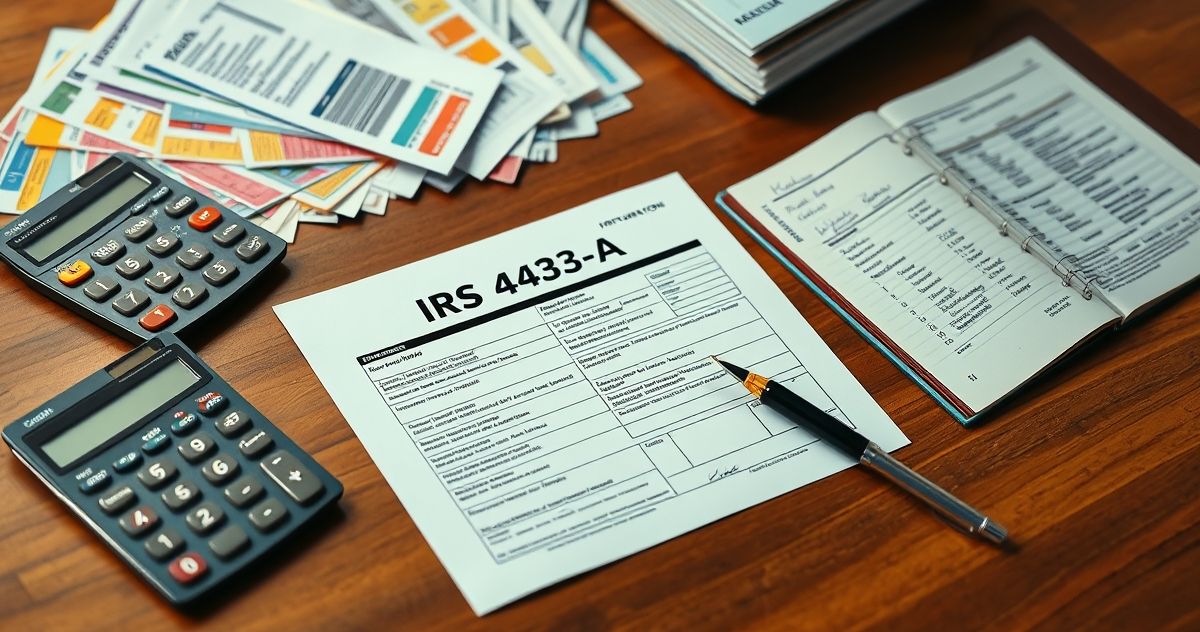What is Form 433-A?
Form 433-A, also known as the Collection Information Statement for Wage Earners and Self-Employed Individuals, is a key document used by the Internal Revenue Service (IRS) in the United States to assess an individual’s financial condition. It is primarily used in situations where taxpayers are seeking to reduce their tax liabilities through IRS programs such as Offers in Compromise, installment agreements, or currently not collectible status.
Primary Purpose of Form 433-A
The main objective of Form 433-A is to provide the IRS with a comprehensive look into a taxpayer’s financial situation. By scrutinizing an individual’s financial details, the IRS can determine the taxpayer’s ability to pay outstanding tax debts and evaluate eligibility for various relief and resolution programs. Form 433-A is essential for taxpayers facing financial hardship and wanting to negotiate the terms of their tax liabilities with the IRS.
Key Features and Components
Form 433-A requires meticulous detail about one’s financial status. Here are the primary sections and components of the form:
- Personal Information: This section collects basic personal details such as name, address, Social Security number, marital status, and dependents.
- Employment Information: Details about current and previous employment, including employer’s name, address, and income, are captured here to understand the income sources of the taxpayer.
- Self-Employment Information: For the self-employed, this section requires information on business income and expenses, providing the IRS with insight into cash flow and profit margins.
- Financial Accounts: This includes checking, savings, investment accounts, and other liquid assets that will help the IRS understand the taxpayer’s financial landscape.
- Assets and Liabilities: Taxpayers must disclose real property holdings, vehicles, other personal property, and debts which demonstrate the net worth and financial obligations.
- Monthly Income and Expense Statement: A crucial section where all sources of income and expenses are detailed to reveal net monthly cash flow.
- Other Information: Miscellaneous financial circumstances such as pending legal judgments or other liabilities that might affect financial standing.
Filing and Compliance Requirements
Completing Form 433-A requires diligence and honesty, as the information must be accurate and fully detailed. Supporting documentation to substantiate income, expenses, and asset values should accompany the form. The IRS uses this data to verify the taxpayer’s financial condition.
Taxpayers must submit Form 433-A when negotiating specific tax relief options with the IRS. Failure to include necessary documents or incomplete submissions can delay the resolution process or result in rejected applications.
Penalties or Consequences for Non-Compliance
Non-compliance with the IRS’s requirements, incomplete submissions, or dishonesty in reporting can have significant consequences. The IRS may reject requests for relief programs, continue collection actions, or even impose additional penalties if it finds inaccuracies after the fact. Furthermore, deliberately providing false information can result in charges of tax fraud.
Importance and Significance in Tax Resolution
Form 433-A is indispensable for taxpayers seeking to manage their tax liabilities through IRS negotiations. Accurate completion of this form allows taxpayers to substantiate claims of financial hardship and propose feasible repayment plans. Neglecting the form or incomplete submissions can hinder the taxpayer’s ability to secure more manageable solutions for outstanding tax debts.
This form serves as a vital tool for those experiencing financial difficulty, allowing a structured dialogue with the IRS. It not only paints a clear picture of the taxpayer’s financial situation but also helps the IRS determine the viability of various tax relief alternatives. For taxpayers aiming to alleviate their tax burdens, mastering Form 433-A is a critical step in effectively engaging with IRS processes and achieving financial compliance.

